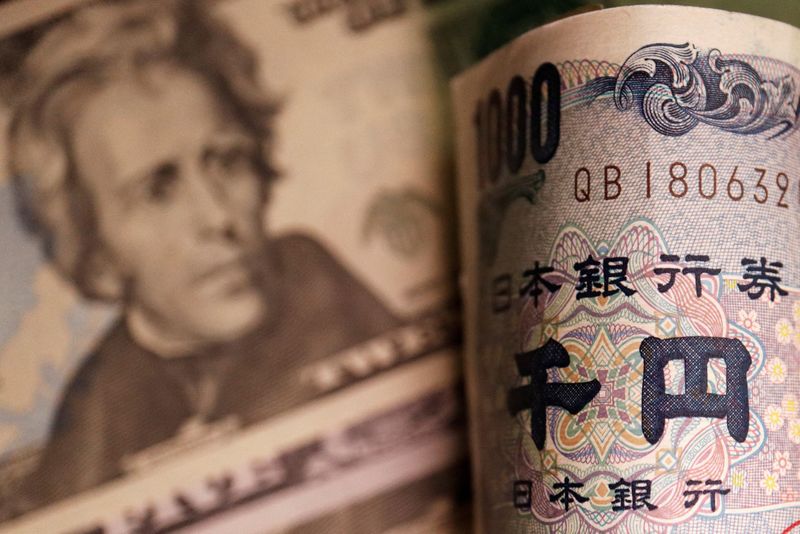Forex
Dollar down on day, but off lows after hotter than expected inflation


© Reuters. FILE PHOTO: Banknotes of Japanese yen and U.S. dollar are seen in this illustration picture taken September 23, 2022. REUTERS/Florence Lo/Illustration
By Karen Brettell
NEW YORK (Reuters) -The dollar was down on the day against the euro and the yen on Thursday but off lows reached before data showed that U.S. consumer price inflation came in above economists’ expectations in December, raising some doubts that the Federal Reserve will cut rates as soon as traders expect.
also surged to a two-year high as several exchange-traded funds (ETFs) tied to the spot price of the cryptocurrency began trading.
The headline U.S. Consumer Price Index (CPI) rose 0.3% last month, for an annual gain of 3.4%, against expectations of 0.2% and 3.2%, respectively.
The cost of shelter, which includes rents, hotel and motel stays as well as school housing, accounted for more than half of the increase in the CPI.
“The details of the report will give dovish Fed officials pause,” said Adam Button, chief currency analyst at ForexLive in Toronto.
Traders are pricing in aggressive expectations for rate cuts this year, with the Fed seen as beginning to cut rates in March.
But “today’s CPI report suggests that the Fed’s initial rate cut may be later than the market is hoping for,” said Quincy Krosby, chief global strategist at LPL Financial (NASDAQ:) in Charlotte, North Carolina.
The fell to a five-month low in December as traders priced in the likelihood that the U.S. central bank will ease monetary conditions as the U.S. economy weakens and inflation moves back closer to the Fed’s 2% annual target.
“The question everyone is struggling with is what kind of inflation regime we are in – are we still in a 2010s era of low growth, low inflation and we’re still just working through the end of the pandemic adjustment and then we’re back into that?” Button said.
“Obviously that’s what the market’s been betting on for the last two months. And I think it’s ultimately right, but getting there might not be as quick as anyone would like,” he added.
Cleveland Fed President Loretta Mester said on Thursday that the latest CPI figures means that it would likely be too soon for the central bank to cut its policy rate in March.
Richmond Fed President Thomas Barkin also said that the data did little to clarify the path of inflation.
The dollar index was last down 0.05% on the day at 102.29. It had traded at around 102.20 before the data was released.
The euro gained 0.09% on the day to $1.09820. The greenback gained dipped 0.20% to 145.48 yen, after earlier reaching 146.10, the highest since Dec. 11.
Sterling rose 0.17% to $1.27630 and got as high as $1.27880, the highest since Dec. 28.
In cryptocurrencies, Bitcoin reached $49,051, the highest since December 2021, and was last up 1.80% at $46,800.
The U.S. Securities and Exchange Commission on Wednesday gave the green light to offer ETFs linked to bitcoin.

 Forex3 years ago
Forex3 years agoForex Today: the dollar is gaining strength amid gloomy sentiment at the start of the Fed’s week

 Forex3 years ago
Forex3 years agoUnbiased review of Pocket Option broker

 Forex3 years ago
Forex3 years agoDollar to pound sterling exchange rate today: Pound plummeted to its lowest since 1985

 Forex3 years ago
Forex3 years agoHow is the Australian dollar doing today?

 Cryptocurrency3 years ago
Cryptocurrency3 years agoWhat happened in the crypto market – current events today

 World3 years ago
World3 years agoWhy are modern video games an art form?

 Commodities3 years ago
Commodities3 years agoCopper continues to fall in price on expectations of lower demand in China

 Economy3 years ago
Economy3 years agoCrude oil tankers double in price due to EU anti-Russian sanctions


























